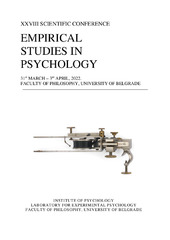Приказ основних података о документу
Combining scientific facts with personal stories leads to more persuasive vaccination communication: A preliminary systematic review
| dc.creator | Lazić, Aleksandra | |
| dc.date.accessioned | 2023-04-19T16:32:21Z | |
| dc.date.available | 2023-04-19T16:32:21Z | |
| dc.date.issued | 2022 | |
| dc.identifier.isbn | 978-86-6427-199-8 | |
| dc.identifier.uri | http://empirijskaistrazivanja.org/wp-content/uploads/2022/03/KNJIGA-REZIMEA-2022_FIN-sa-isbn_bez_linija-1.pdf | |
| dc.identifier.uri | http://reff.f.bg.ac.rs/handle/123456789/4332 | |
| dc.description.abstract | A popular approach to health communication is the deficit model, which emphasizes the repetition of objective scientific evidence to motivate people to change their beliefs and behaviors. Increasingly, however, health communicators are turning to narratives or the stories people tell. Narratives can be persuasive by fostering engagement with the story and its characters and by provoking an emotional response. Focusing on the domain of vaccination, we conducted a preliminary systematic review to explore how narrative communication compares to factual communication and whether it can influence vaccination outcomes. We identified primary studies through previous systematic reviews and meta-analyses. We additionally searched PubMed, Cochrane Library, Web of Science, and Google Scholar for articles published 2015–2019, with terms such as “story”, “anecdote” or “immunization” in the title. We included experimental designs contrasting a pro-vaccine narrative to (a) a control/baseline condition and/or (b) facts-only and statistics-only (including risk) messages. We also included designs testing combined narrative and factual/statistical messages. The review included 17 eligible articles published 2005–2019. The studies were predominantly conducted in the US and concerned the human papillomavirus vaccine (11 articles, respectively). All narrative interventions featured a personal-experience story. We extracted 97 comparisons (k) of intervention groups and contrast groups. The most studied outcomes were vaccination intentions (k = 37), perceived disease risk (k = 18), and general vaccination attitudes and beliefs (k = 15). Compared to control/baseline, narrative-only messages tended to positively affect vaccination outcomes (k = 19/32), rarely backfiring (k = 4/32). Half of the time, narrative-only outperformed facts-/statistics-only messages (k = 23/45), while facts-/statistics-only messages were better in 14/45 instances. Combined interventions were better than the control/baseline (k = 8/8), statistics-only (k = 6/9), and narrative-only messages (k = 2/3). We conclude that a promising strategy in vaccination communication is combining scientific facts with personal stories tailored to the audience's sociocultural characteristics. We give recommendations for public communicators and directions for future research (e.g. larger samples for more precise effect size estimates, tackling conspiracy beliefs, and assessing effectiveness of interventions after a delay). | sr |
| dc.language.iso | en | sr |
| dc.publisher | Institut za psihologiju i Laboratorija za eksperimentalnu psihologiju, Beograd: Filozofski fakultet | sr |
| dc.rights | openAccess | sr |
| dc.rights.uri | https://creativecommons.org/licenses/by/4.0/ | |
| dc.source | XXVIII scientific conference Empirical studies in psychology | sr |
| dc.subject | science communication | sr |
| dc.subject | health communication | sr |
| dc.subject | narrative persuasion | sr |
| dc.subject | vaccination | sr |
| dc.subject | systematic review | sr |
| dc.title | Combining scientific facts with personal stories leads to more persuasive vaccination communication: A preliminary systematic review | sr |
| dc.type | conferenceObject | sr |
| dc.rights.license | BY | sr |
| dc.identifier.fulltext | http://reff.f.bg.ac.rs/bitstream/id/10548/eip2022-Lazic.pdf | |
| dc.identifier.rcub | https://hdl.handle.net/21.15107/rcub_reff_4332 | |
| dc.type.version | publishedVersion | sr |

